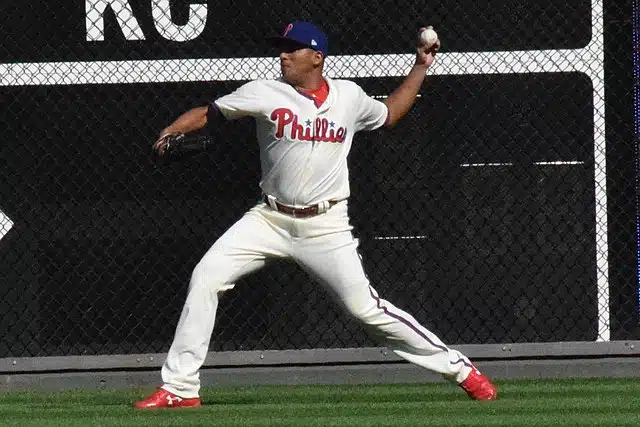
When Suárez took the mound against the Texas Rangers on May third, his narrative had completely changed. He entered that start with a 4.42 ERA and a 4.54 FIP. He walked eight batters in 18.1 innings and only struck out 12.
Suárez did what he had done all season, throwing his fastball changeup combination 89% of the time. Suárez’s changeup worked for him all of last season but generated just two whiffs on nine swings that night.
He only went five innings with two walks, three strikeouts, three earned runs, and allowed two home runs. The Phillies went on to lose six to four, dropping their record to 11-13.
With this bad outing, it was clear that Suárez needed to change how he was going to pitch. He simply needed to rely on more than just a fastball changeup combination with the occasional slider. He needed new ways so he could face hitters multiple times through an order.
In his next start against Seattle, Baseball Savant tracked Suárez throwing a cutter. So we can infer this is when Suárez started to realize what he needed.
Against the Dodgers, Suárez was tracked with five in his seven-inning outing. On the road in Atlanta, Suárez went only 4.1 innings allowing four runs but was now tracked with throwing a curveball.
In 2021 Suárez broke onto every Phillies fan’s radar with his miracle season. He went from long-man to high leverage arm, to closer, and then eventually a lockdown starter. He threw almost exclusively fastballs and changeup during this season so it’s easy to infer why he thought this would work again.
However, the MLB is a dangerous game and instead of bringing back a 1.36 ERA, he would end May with a 4.69 ERA and questions about moving him to the bullpen. Hitters knew exactly what he was going to do, which turned his biggest strengths into his biggest weaknesses.
What Suárez needed was a real pitch mix to attack hitters with. He only throws about 93 miles per hour with not much spin so it’s unlikely he can just overpower hitters. He needs hitters to focus less on his two best pitches. It’s not that he needs to develop two pitches better than his changeup, but just stuff that can eliminate an obvious game plan.
Against the Braves on June 29th, Suárez began using his cutter and curveball as real pitches in his pitch mix, throwing both a combined 26% of the time. Instead of 89% of fastballs and changeups, it was now 73% of the time.
In the 20 changeups he threw, he generated 12 swings and six whiffs, instead of the two against a worse Rangers roster. His curveball even began to generate some serious swing and miss potential, making Dansby Swanson look silly with this beauty.
With teams stacking mostly righties against him, throwing just an inside fastball won’t solely induce the contact he is looking for, so came the cutter. Kyle Gibson and Zack Wheeler use their cutters to a similar effect against lefties with the goal of jamming hitters into soft contact. This also worked well for Suárez in that Braves start when he got Travis d’Arnaud to hit an easy ground ball to third.
Suárez would go onto the IL after this start for back spasms but the progress wouldn’t. Against the Marlins he showed even more confidence in his newfound cutter and curveball, throwing them 29% of the time in his five-inning shutout. He would’ve certainly gone longer if it wasn’t for the IL stint since he was only at 64 pitches.
His curveball even generated four whiffs in five swings, showing he may have a real nasty pitch in the works for the future. In his start last night against the Braves, he threw another five good innings that should’ve been scoreless if not for a second-inning error. Suárez threw more cutters than changeups in this outing, something that would’ve been unimaginable heading into the season.
Developing a real pitch mix now allows his changeup to get even more whiffs. Throwing just 15 changeups in his 78-pitch outing, he generated seven whiffs on eight swings. His curveball once again struck out Swanson, and he induced the soft contact he was looking for with an average exit velocity of just 85 mph.
Since the start of June, Suárez has an ERA under three and in his last three outings with the new pitch mix, he has a 2.16 ERA.
2021 Suárez is probably never coming back but that doesn’t mean he can’t be a really good arm in the starting rotation. Instead of trying to be 2021 Suárez again, he is now a different pitcher. A pitcher who is less predictable and even nastier than before.







